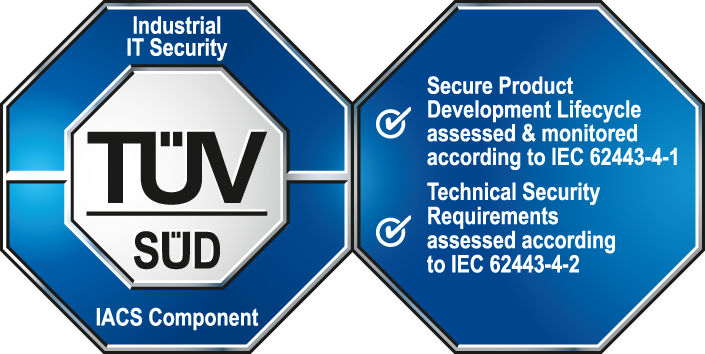Command line options (input)
-wait
If you launch the ASCII Manager with the option -wait, the manager is not stopped as soon as it finishes processing the file specified at start-up but continues to run.
By means of the internal data point element _AsciiManager.FileName, you can pass online additional files for processing to the manager by setting the config/attribute _original.._value.
The path for the file containing the configuration data must be absolute. If this value is sent, the specified file will be processed. The value can be sent either individually or in any combination with other data point elements.
Example
Passing the file /users/parameterdata to a running ASCII Manager:
main()
{
dpSet("_AsciiManager.FileName:_original.._value", "/users/parameterdata");
}-yes
If the ASCII Manager is used to input ASCII files that modify existing data point types, it is necessary to confirm these modifications interactively during import. In order to avoid this prompt, start the input process with the command line option -yes. yes ASCII parameter also affects CNS import.
-CNSyes / -CNSno
The --CNSyes and -CNSno options now only apply to
CNS imports:
-
CNSyes: Updates existing CNS nodes. -
CNSno: Does not update existing CNS nodes and does not show error messages.
Examples:
- -yes -CNSyes -Typesyes: Both CNS and Types will change.
- -yes -CNSno -Typesyes: Only Types will change; CNS will stay the same.
- -yes -CNSyes -Typesno: Only CNS will change; Types will stay the same.
- -yes -CNSno -Typesno: Both CNS and Types will remain unchanged.
- -no -CNSyes -Typesyes: The -no option is ignored in this case, so -CNSyes and -Typesyes are applied.
-no
The option -yes (see above) allows the automatic change of existing data point types if the ASCII Manager is used to input ASCII files that modify data point types. Contrary to the option -yes, the option -no does not change the existing data point types but ignores the changes.
-in <wildcard pattern>
-inactivateAlert
If an input file contains data that change alarm handlers, this file must be input with the command line option -inactivateAlert. This deactivates the alarm handlers to be changed. After completing the input, the setting of the attribute _active in the input file determines whether the alert handling is activated again (when the value is 1) or remains deactivated (when the value is 0).
-noAlertConfigHist
For the same purpose, the config entry noAlertConfigHist (bool; default = 0; [ascii] section) can be used. The command line option has precedence over the config entry.
If noAlertConfgiHist = 0 or the option -noAlertConfigHist is not used the known behavior of the ASCII manager remains, i.e. new alert configs will be created in the configuration history.



